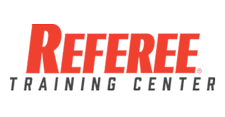Local association meetings can come and go quickly. Be prepared and members will show up, learn and benefit from those meetings. If not, poor meeting preparation will gradually hurt the association.
There are many must-haves for meetings that will help members prosper. If planning for meetings is a task you have taken on within your association, keep the following in mind to keep those members coming back for more.
1. Video
Video for use in meetings is becoming easier to obtain and easier to prepare and organize. Use of video will help to highlight rules changes, critical incidents, points of emphasis, mechanics and philosophy for referees. Videos can also highlight a variety of situations or plays to better illustrate as teaching points.
2. PowerPoint presentations
Microsoft PowerPoint is an easy program to use and a powerful tool for giving a presentation. Whether your presentation needs a visual kick, tools for collaboration, easy access or the ability to share information, developing a PowerPoint is a good option. It can even help reduce speaking anxiety by drawing eyes away from the speaker and toward a screen, though it is not a substitute for sound speaking skills. But it will complement video and is vital to any meeting.
3. Meeting moderator
Most association meetings are led by the association president, but individual sport meetings are often led by the chairman of that sport. He or she needs to be a good moderator by keeping the discussion and presentation moving along. That person needs to take responsibility for the process but should not be over-involved in the content of the meeting. A moderator is especially helpful in keeping the meeting moving along so most or all points of the presentation can be covered.
When a question is raised or statement made, re-state to avoid confusion. Make sure everyone is listening, with no side conversations. The moderator must control the discussion to stay on topic. If an important issue is raised not germane to the topic, table it to an offline task force.
4. Outside speaker
Once or twice during a meeting schedule, try to line up a special guest to address officials. That person may be a conference commissioner, a current or former official, or a leader in the community.
Be sure that the speaker knows his or her audience. If the speaker isn’t familiar with officiating, he or she may spout off a speech that they’ve given before.
5. Accommodations
Conduct a meeting that has comfortable seating arrangements and is centrally located for members. Be sure a video/PowerPoint screen is available as well as electrical plug-ins. Perhaps an association member is a teacher and has access to a school classroom? Meeting rooms at fitness centers or community centers also work.
6. Agenda
With a pre-circulated agenda, everyone knows the objective of the meeting, which topics will be discussed and how much time will be spent on each topic. An organized agenda that is emailed or posted to members in advance permits everyone to carve out the time from his or her day and come with ideas and questions already considered. Outline the meeting’s expectations and attach background materials if necessary.
7. Begin and end on time
Be respectful of attendees’ commitments and wrap up the meeting within the allotted time. If you’ve structured your agenda carefully and adhered to key issues without allowing tangents, finishing on time should be easy.





